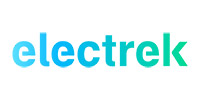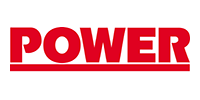 Tesla is apparently significantly ramping up its effort to help rebuild the power grid in Puerto Rico after it was destroyed by hurricanes last year.
Tesla is apparently significantly ramping up its effort to help rebuild the power grid in Puerto Rico after it was destroyed by hurricanes last year.
After having completed hundreds of energy storage project on the islands in the last few months, Tesla CEO Elon Musk now says that they have ‘about 11,000’ energy storage projects underway in Puerto Rico, which means something big is in the work.
Last month, Tesla CEO Elon Musk said that the company installed batteries at 662 locations in Puerto Rico.
We reported that they focused on critical services. For example, Tesla deployed a series of Powerpack systems on the Puerto Rican islands of Vieques and Culebra for a sanitary sewer treatment plant, the Arcadia water pumping station, the Ciudad Dorada elderly community, the Susan Centeno hospital, and the Boys and Girls Club of Vieques.
The automaker’s energy division also deployed a solar+battery system at a hospital in Puerto Rico.
While it’s one of the biggest examples of Tesla deploying energy storage systems in a single market, it now sounds like it’s only the beginning as Musk says that there are about 20 times more projects underway in Puerto Rico:
At the very minimum, it would be one Powerwall per project, which would add up to a deployment of at least ~150 MWh of energy capacity.
But that’s just the bare minimum since as we have recently seen, most projects include more than one Powerwall.
For example, we recently reported on a homeowner in Puerto Rico who received a 3-Powerwall installation that helped keep the lights on during the last power outage:
read more
 Nearly a quarter of the 1.1 billion without access to reliable electricity are located in India, which is critical to its development and which requires creative solutions. While the growth of centralized power generation and delivery is expanding there, so too is onsite rooftop solar energy with localized microgrids.
Nearly a quarter of the 1.1 billion without access to reliable electricity are located in India, which is critical to its development and which requires creative solutions. While the growth of centralized power generation and delivery is expanding there, so too is onsite rooftop solar energy with localized microgrids.
 Residential solar Tesla‘s
Residential solar Tesla‘s  NV Energy announced Thursday it has contracted for more than 1 gigawatt of new solar energy and 100 megawatts of battery energy capacity, in a resource plan that’s still subject to regulatory approval and hinges on the outcome of a high-profile ballot measure.
NV Energy announced Thursday it has contracted for more than 1 gigawatt of new solar energy and 100 megawatts of battery energy capacity, in a resource plan that’s still subject to regulatory approval and hinges on the outcome of a high-profile ballot measure. The third longest railway system in the world could be on the verge of an energy storage makeover. That would be Russian Railways, which sprawls over 85.5 thousand kilometers. A little over half that length is electrified, and if all goes well with a new R&D project, the little could turn into a lot.
The third longest railway system in the world could be on the verge of an energy storage makeover. That would be Russian Railways, which sprawls over 85.5 thousand kilometers. A little over half that length is electrified, and if all goes well with a new R&D project, the little could turn into a lot.
Recent Comments